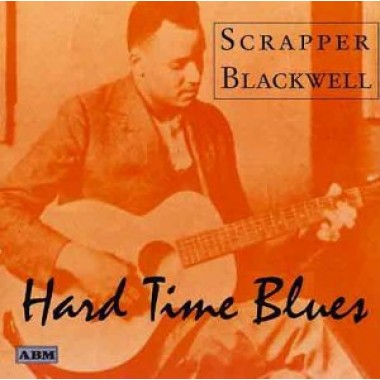Blue Days Blues Lesson – Scrapper Blackwell
As far as I know, Blackwell created this song, which is in a standard tuning in the key of A. As usual, the challengewhen playing A or E is how to make it sound different from all the others?
 Scrapper
used several techniques to make his music a little different and interesting,
one of which was a strong rhythmic monotonic bass line, which was often damped
with the palm of his picking hand.
Scrapper
used several techniques to make his music a little different and interesting,
one of which was a strong rhythmic monotonic bass line, which was often damped
with the palm of his picking hand.
This technique was used by many blues guitar players, such as Hopkins, Broonzy, and Mance Lipscombe. It means that you can strike the bass strings hard without worrying about the string buzzing, and the resulting 'thud' gives the impression of a drum beat.
Another
trick used in blues songs is to repeat a particular riff, which sticks in the
mind and becomes representative of the song. Blackwell does this with all the
chords, but is most striking when fretting the A.
On the face of it, the picking structure is easy, but it's deceptive. He might break out of the monotonic bass line to use his thumb on the treble strings (when playing an instrumental break, for example).
As in many of his songs, he adds a couple of instrumental breaks to make the song more interesting and they are generally a little different in their timing or structure.
The words to this blues song are particularly powerful:
'I'm sittin' here thinking, as the rain comes pouring down - The more I'm thinkin', the more I feel like cryin''
You can almost see him sitting there, and the words have a sadness that evokes the internal state of this lonely blues man, often villified for his anti-social behavior.
The chord structure is pretty standard with no surprises,
using a long A (I fret both the last two strings on the 5th fret with my pinky), a D7 chord and E/E7. In one place he also used a diminished chord on the 4th fret to make progression between chords more interesting. Like many blues men, he is economical when fretting some chords.
For example, when playing a D7 he didn't fret the high E string if he didn't pluck it - why bother? He generally did fret the bass notes, as sometimes he didn't damp them, but let them ring a little. Other blues men, like Broonzy or Lipscombe sometimes didn't even bother to fret the basses, as they always damped them and so it wasn't too important.
